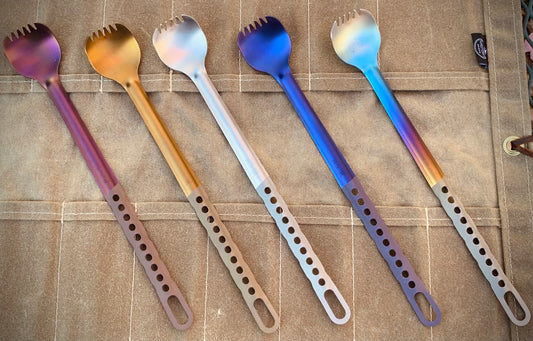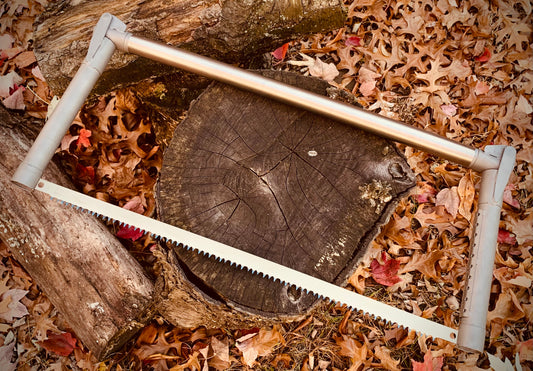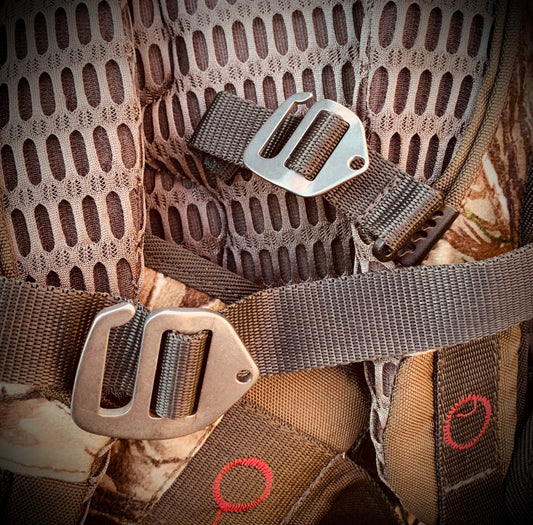BLOG
Beginner's Guide: Fire Kit
By George Nikolakopoulos
Fire is one of the four basic needs that must be covered during a campout. Fire provides many benefits, after all, it is the most important discovery of the human race. A fire will cook, boil water, dry clothes, give warmth, and provide safety. It also has psychological advantages too. People at the camp will socialize gathered together around the fire share stories and jokes, and talk about different topics.
The Triangle of Fire
A fire needs three elements: fuel, an oxidizing agent, usually oxygen, and heat. A fire naturally occurs when these elements are combined in the right mixture. The fire will stop if you remove or block any of these elements. For example, water absorbs heat and turns it into steam. The wood(fuel) can be removed manually or naturally when the fire has consumed all burnable fuel. Also, a fire cannot start or continue without oxygen. A fire blanket, a fire extinguisher, or water, denies the oxygen from the fire, thus slowing the combustion process.
Fire Sources and Tinder Bundles
When you start building your kit, you must include sure-fire sources and tinder. The most common sources of sure-fire are Bic lighter, waterproof/stormproof matches, a ferrocerium rod, and a set of flint and steel. For tinder, you can use manmade materials like cotton balls with petroleum jelly, char cloth, jute twine, or any other similar type of item that you can find in any outdoor shop. When you are in the woods you can also make tinder bundles from natural materials. You can collect dry grass, fatwood, and dry twigs. If there are birch trees in the area, you can also collect birch bark. By collecting dry grass, you can create a bird’s nest, to help you start your fire. The quantity of the collected dry grass must be enough to create a bird’s nest the size of your fist. Then you can place at the center of the nest a few fatwood shavings or pieces of birch bark and strike them with your ferrocerium rod. To strike the ferrocerium rod you can either use the striker that comes with some models, or the back of your knife, if it has a 90 degree spine. You can use a piece of char cloth as tinder after you have made a spark by striking your flint and steel. You can also make a bird’s nest using jute twine. You have to unwrap a piece of the string and then shape it into a bird’s nest.

In the pictures above you can see the components to start a successful fire; dry grass shaped into a bird’s nest and dry twigs. Using a stick around 1 inch in diameter and your knife, you can create feather sticks that will help start a fire. Preferably dry and soft wood. Try to cut long and slim stripes of the stick, that will easily ignite when catching sparks from your ferrocerium rod or flame from your lighter.
A Simple Fire Kit

I am trying to keep my fire kit simple, although I do carry extra or duplicate items in my pack. They are not heavy and it is always good to have backups. My main fire kit is hosted in a pouch that is attached to my belt. As you can see in the pictures, I keep a big Bic lighter, a ferrocerium rod, and a metal tin. This tin is used to keep pieces of char cloth, and my flint and steel set. It is also used to make char cloth. The ferrocerium rod has a small piece of firecord, which is a special type of 550 paracord, that contains one strand made from fire-starting material. Very helpful in very wet conditions.
As I mentioned before in my backpack I keep a few extra items, like a spare Bic lighter, waterproof matches, an extra ferrocerium rod, a bag with birch bark, a small roll of jute twine, a piece of fatwood, cotton balls with petroleum jelly and few char cloths. I also keep a small magnifying glass. I like to use that glass to start solar fires sometimes.

The extra fire kit items that the author keeps in his backpack
To build your skills, try to practice with natural materials but always keep a couple of items that will help you ignite a fire in terrible weather conditions. Build your kit accordingly and plan. Also, remember to be very careful when you start a fire in the woods. Take all necessary safety measures, especially clearing a large enough spot from debris before you light your fire. Everyone ought to protect and preserve the great outdoors.
George Spent nine years in the Greek Army Raiders where he learned survival skills. Since being honorably discharged, he has been working in the tourism industry. After every season ends, you will find him at his olive field harvesting olives to make oil. In his free time, George loves spending time outdoors hunting, camping, and practicing traditional archery. He enjoys writing articles, sharing his experiences of his trips to the woods, gear reviews, recipes and survival tips. George was a a contributing writer to Self-Reliance Illustrated magazine and has a YouTube and Blog under the name Mountain Raider.
Featured collection
-
 Sold out
Sold outTitanium Spork - Mink
Regular price From $20.00 USDRegular priceUnit price per -
Titanium Folding Camp Saw
Regular price $240.00 USDRegular priceUnit price per -
Titanium G Hook Quick Release Buckle
Regular price From $18.00 USDRegular priceUnit price per -
Titanium Spoon - Marten
Regular price From $20.00 USDRegular priceUnit price per




